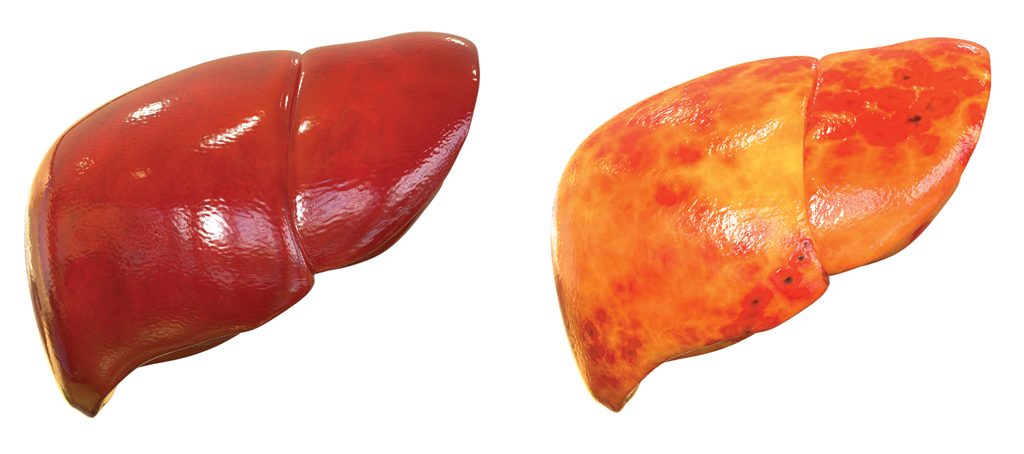
Do you know organs can be ‘obese’ too – and if it’s your liver that is packing too much fat, problems can arise. Read on to find out about the dangers of fatty liver and why it matters.
Fat has an important role in the body — it acts as fuel, keeps us warm and protects our organs. However, too much fat in the body, particularly in the liver, can cause significant health issues. In normal cases, the liver contains a small percentage of fat, but if the amount of fat is more than five to 10% of the liver’s total weight, it’s a sign of liver disease. Liver disease can fall into two categories: alcoholic liver disease and non-alcoholic liver diseases.
Alcoholic Liver Disease (ALD)
As its name suggests, is a result of heavy alcohol use. Although alcoholics commonly develop the disease, it can also be present in those who binge-drink. Studies show that there is a genetic aspect of ALD as alcoholism traits may be inherited. These genetic traits are also linked to differences in the way this group of people tolerate alcohol and break it down in the body. Other risk factors of ALD are:
- liver inflammation caused by hepatitis C
- excessive iron in the body
- obesity
Non-Alcoholic Fatty Liver Disease (NAFLD)
NAFLD is inherited and not caused by alcohol abuse. It can, in fact, occur in moderate drinkers and teetotallers. Apart from genetic factors, the risk of NAFLD can be increased due to:
- obesity
- high cholesterol
- diabetes
- viral hepatitis
- autoimmune or inherited liver disease
- fast weight loss
- malnutrition
Danger Signs
Having a fatty liver often causes few to no symptoms, especially in the early stages. However, some of the more common signs of liver disease include weight loss, poor appetite, weakness, nausea, confusion, poor judgment or trouble concentrating. In some cases, there may be pain in the upper right abdominal area because of an enlarged liver. Some of these symptoms may get worse after a bout of heavy drinking. In severe cases, there may be a yellowing of the whites of the eyes and/or skin, which indicates jaundice. If left untreated, fatty liver disease can progress into cancer and/or liver failure.
How to Diagnose and Treat Fatty Liver Disease
The disease can be detected during a routine check-up and confirmed by blood tests, ultrasound scans and/or a biopsy. Once fatty liver disease has occurred the condition cannot be reversed. However, simple life changes can help manage symptoms and prevent disease progression. One of the most important steps is to avoid drinking and smoking. It is also helpful to lose weight at a healthy and sustained pace — crash diets will only aggravate the disease. Make practical and sensible lifestyle choices such as eating a balanced diet, exercising regularly and managing stress well.







